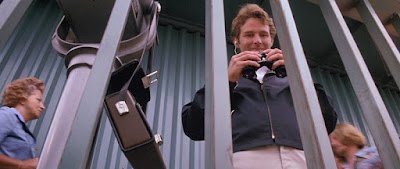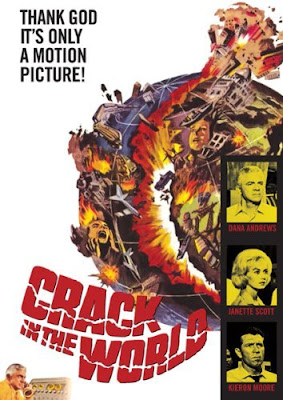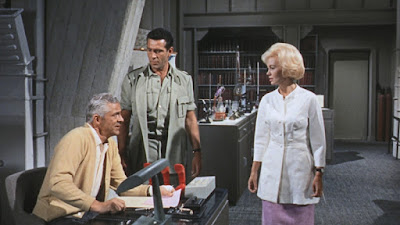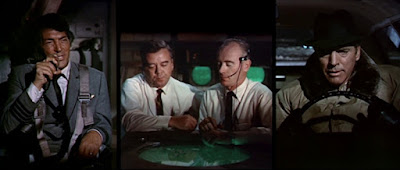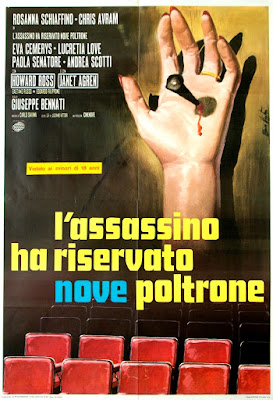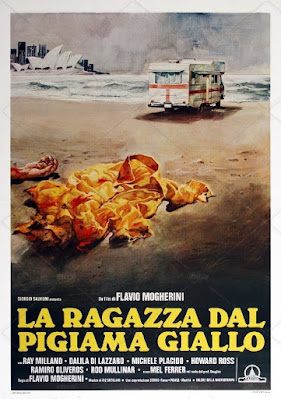
During
a time when global travel is inadvisable or outright restricted, most of us can
only dream about flying off to exotic, faraway locations, let alone enjoying
frivolous travel within our own country. Back in the weird and wacky 1970s,
Hollywood set its sights on every conceivable sort of calamity as a potential
cash cow. One of the most enduring relics from this era were the Airport
movies. Over the course of the decade-long series, four installments, each more
audacious than the former, graced the silver screen. They were products of
their time in the best and worst ways, featuring ridiculous feats of heroism, an
expansive cast of recognizable faces from old and (then) new Hollywood, and
quotable dialogue. On the other hand, the Airport movies reflected some aspects
of a previous decade best left behind, with borderline racist comments, rampant
workplace sexism, and atrocious fashions. Watching the Airport movies,
we’re at once reminded of the rewards of travel and its inherent dangers. Considering
the string of disasters depicted in these films, however, we’re reminded, on
second thought, we’re probably better off staying home.

Airport
(1970) Written and directed by George
Seaton; Based on the novel by Arthur Hailey; Starring: Burt Lancaster, Dean
Martin, Jean Seberg, Jacqueline Bisset, George Kennedy, Helen Hayes, Van
Heflin, Maureen Stapleton; Available on Blu ray and DVD
Rating: ***
“It’s an old-fashioned, formula entertainment. It’s not art,
it’s fun.” – Producer Ross Hunter (from 1986 L.A. Times interview by Dennis
Hunt)
Airport general manager Mel Bakersfeld (Burt Lancaster) is
having a rough night at (the fictional) Lincoln International. After spending a
few too many long days at the office, managing crisis after crisis, his marriage
to stuffy, waspish Cindy (Dana Wynter) is on the skids. He’s testing the bounds
of his relationship with his assistant Tanya (Jean Seberg), while she ponders
transferring to another position. Meanwhile, following the worst snowstorm in
years, the airport is in danger of operations screeching to a halt, as
Bakersfeld’s ground crew struggle to keep the runways clear with limited equipment.
And if that isn’t enough, he’s faced with a public relations nightmare as a
group of angry homeowners protest the noisy flyovers by airliners.
But that’s not all, folks…
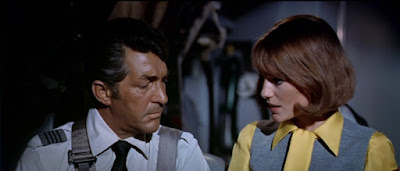
Enter Dean Martin as Vernon Demerest a philandering pilot who’s
coming to grips with the fact that his stewardess girlfriend Gwen (Jacqueline
Bisset) is pregnant. Fold into this complicated batter Ada Quonsett, a plucky
little old lady (Helen Hayes), with a talent for sneaking on flights. As
Bakersfeld soon learns, the serial stowaway has more than a few tricks in her
arsenal to elude unsuspecting airport officials (Who needs frequent flyer miles
when you have her dubious skill set?). We’re also introduced to unflappable
chief mechanic Joe Patroni, played with zeal by George Kennedy (Get used to
that character, folks, because he provides a thread of continuity between the
first movie and the sequels). Snow plows be damned, he’s determined to free a
stranded 707,* if he has to do it himself. Oh, and last but not least (in what’s
arguably the focal point of the film), down-on-his-luck ex-demolitionist,
Guerrero (Van Heflin), takes the idea of bringing his work home with him just a
smidge too seriously, boarding a 707 bound for Rome (flown by Vernon). Armed
with a bomb and a flight insurance policy worth more than 200 grand, he intends
to detonate the aircraft over the ocean, where there’ll be no traceable evidence.
* Fun Fact #1: Petroni makes a point that the aircraft in
question costs $8 million (or about $54 million in 2020 dollars), a lofty sum
in 1970. For comparison, a new Boeing 787 will set you back about $170 million.
Much like many of the big American cars that came out of
that era, Airport is a clunky, inefficient machine with more style than
substance. It takes half the movie to arrive at the main conflict (Arguably
30-45 minutes could have been cut from the film, and no one would have
complained). Also, Airport suffers from an abundance of split screens. What
begins as a cute little stylistic flourish is repeated ad nauseum, to the point
where you’ll be prompted to scream, “Enough already!” To his credit, writer/director
George Seaton keeps multiple threads of Airport’s convoluted soap opera
story going. Despite its myriad flaws, this ungainly bird somehow stays up in
the air.
Airport 1975
(1974) Directed by Jack Smight; Written by Don Ingalls;
Based on the novel by Arthur Hailey; Starring: Charlton Heston, Karen Black,
George Kennedy, Efrem Zimbalist Jr., Helen Reddy, Linda Blair, Dana Andrews,
Sid Cesar and Erik Estrada; Available on Blu ray and DVD
Rating: ***
“Climb baby, climb.” – Alan Murdock (Charlton Heston)

The Boeing 747 was a really big deal, in more ways than one
when it entered service in 1970. You didn’t have to be an aviation enthusiast
to appreciate its distinctive double-decker shape, massive proportions and
luxurious amenities, which ushered in a new era of air travel. It’s therefore
no surprise that the 747 should be the star of Airport 1975 (released in
1974). Disaster strikes (quite literally) when the airliner is diverted from
L.A. to Salt Lake City, and the pilot (Dana Andrews) of a small private plane
suffers a heart attack mid-flight. His craft collides with the huge passenger
jet, leaving a gaping hole in the cockpit. In the blink of an eye, the number
of personnel qualified to operate the plane drops to zero after the co-pilot is
sucked out, the pilot (Efrem Zimbalist Jr.) is blinded by shrapnel, and the
navigator (Erik Estrada) is killed by wreckage. All seems hopeless until
intrepid stewardess Nancy Pryor (Karen Black) is forced to take the controls,
with the help of ground control.

Since this is an Airport movie, expect the requisite all-star
cast, including Gloria Swanson, in her final film appearance, playing herself.
Myrna Loy plays an alcoholic elderly lady. Sid Caesar appears as a chatterbox
passenger, and Jerry Stiller spends most of the picture asleep while chaos
reigns around him. In one scene that will be instantly familiar to anyone
acquainted with a certain famous parody flick, see Helen Reddy as a singing,
guitar-playing nun, entertaining Janice Abbott (Linda Blair), a sick kid
awaiting a kidney transplant. George Kennedy is back as the irascible Joe
Petroni, now a VP of operations for the fictional Columbia airlines. This time,
there’s more at stake, with his wife and son, Joe Jr., aboard the damaged 747.

No ‘70s disaster film would be complete without Charlton
Heston (1974 was a busy year for Heston, who also appeared in Earthquake
the same year) as ace flight instructor (and Pryor’s ex-boyfriend) Alan
Murdock. He attempts a dangerous gambit by rappelling via helicopter to the
damaged cockpit. Will he reach the cockpit in time, thus preventing an imminent
tragedy? Will Murdock and Pryor patch up their relationship? I think you can
guess the outcome, although the movie never addresses how the last-minute
diversion to Salt Lake City affects poor Janice and her transplant. While the
script conditions us to accept Murdock as the default hero, Nancy doesn’t get
nearly enough credit for keeping the jumbo jet in the skies and preventing a
passenger riot when they learn about the sudden shortage of pilots onboard. It’s
difficult, nigh impossible, for modern viewers to imagine this film before
Zucker, Zucker and Abrahams had the last word on airplane disaster flicks with
their parody to end all parodies, Airplane! (1980), but that shouldn’t
dissuade you from booking a ticket on Airport 1975.

Airport ‘77
(1977) Directed by Jerry Jameson; Written by Michael Scheff
and David Spector; Based on the novel by Arthur Hailey; Starring:
James Stewart, Jack Lemmon, Lee Grant, Brenda Vaccaro, Joseph Cotten,
Christopher Lee, Darren McGavin, Kathleen Quinlan and George Kennedy; Available
on Blu ray and DVD
Rating: ***
Karen Wallace (Lee Grant): “If I weren’t such a sinner how
would you look like such a saint? Isn’t that why we’re together? If it isn’t,
tell me, and I’ll stop acting like an idiot.”
Martin Wallace (Christopher Lee): “Why should I, my dear?
You’re so proficient at it.”
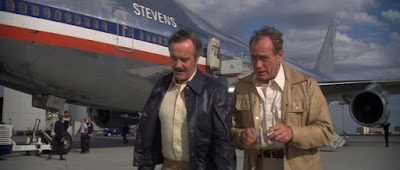
The third installment of the durable series takes things up
another notch with the most unlikely premise to date: a hijacked 747 sinks in
the Bermuda Triangle. This time around, the filmmakers do away with any
pretense that we give a hoot about the airport-based drama, concentrating
solely on the aviation disaster. Family, friends and press are invited to a
gala event hosted by billionaire Philip Stevens (James Stewart) on his island
estate. The guests board Stevens’ private 747, loaded with priceless artwork,
bound for his new museum. But evil-doings are afoot, as an organized ring of
thieves conspire to rob the plane of its valuable cargo, and strand the
passengers and crew on an island. Soon after they take control of the plane (with
the passengers and crew incapacitated), their plans go awry when a wingtip
smacks into an offshore oil derrick, subsequently causing the plane to careen into
the ocean. Somehow, the jumbo jet remains miraculously intact after hitting the
water, retaining its structural integrity even while it sinks.* Any semblance of credulity is stretched to the breaking
point as the survivors are stuck at the bottom of the ocean, pondering their
respective fates. Call me skeptical, but I doubt Boeing ever considered the
viability of one of their aircraft doubling as a submersible.
* Fun Fact #2: Visitors to Universal Studios in the late
‘70s and early ‘80s (including Yours Truly) were treated to an attraction,
Screen Test Theatre, where a few lucky audience members could participate in
their own version of Airport ’77, and take home a copy for posterity.

Jack Lemmon is fine as stalwart pilot Don Gallagher, who
risks life and limb (including learning how to scuba dive with Navy frogmen) to
save the passengers. George Kennedy is back, reprising his role as Petroni (now
employed by Stevens), although his character isn’t given much to do in this
outing. In one brief scene, we learn that he’s been tasked to provide technical
assistance to the U.S. Navy in their search and rescue operation. Expect the usual
assortment of old and new Hollywood in the supporting cast. Olivia de Havilland
and Joseph Cotten lend some old-school class to the production. Darren McGavin lends
his gruff but lovable persona as operations manager Stan Buchek (a name that
suspiciously sounds like Kolchak). Christopher Lee, playing a non-villainous
role for a change, appears as oceanographer Martin Wallace. His selfless
efforts helping humankind with undersea research are contrasted with his
selfish wife Karen (Lee Grant), who uses booze as an excuse for her terrible,
entitled behavior (Hmm… Perhaps she was the original template for the “Karen”
meme?). Blind piano player Steve (played by Tom Sullivan) sings the non-hit “Beauty Is
In The Eye Of The Beholder” (I’m sure the producers were looking for another
“The Morning After,” but you’ll probably forget it as soon as it’s over).

Much like its predecessors, Airport ‘77 has more than
its share of clunky elements, with plenty of plot holes and unresolved threads.
It suffers from what seem to be excessive cuts – we don’t know enough about the
characters and their relationships to care. Also, in several establishing shots,
it appears that the nose of the jumbo jet is dangerously close to the precipice
of a continental shelf, but nothing much is made of this. But undeveloped characters
and missed opportunities aside, there’s something compelling in the premise,
spurred by the 9-year-old inside us all, who asks “What if an airliner was
stuck underwater?”* My suggestion? Make sure your chair is a reclined position
while keeping your brain in standby mode, and enjoy a glass or two of your
favorite beverage.
* Fun Fact #3: So, what does a commercial pilot think about
such an unlikely scenario? Don’t count on it. Read more here.
The
Concorde: Airport 79
(1979) Directed by: David Lowell Rich; Written by Eric Roth;
Story by Jennings Lang; Based on the novel by Arthur Hailey Starring: Alain
Delon, Susan Blakely, Robert Wagner, George Kennedy, Sylvia Kristel, Eddie
Albert, Bibi Andersson, Charo, John Davidson, Martha Raye and Jimmie Walker;
Available on Blu ray and DVD
Rating: **
Isabelle
(Sylvia Kristel): “You pilots are such... men.”
Capt.
Joe Patroni (George Kennedy): “They don't call it the cockpit for nothing,
honey.”
While
notorious for many reasons, the 1970s also heralded some aviation milestones. The
Concorde, one of the most ambitious (and ostentatious) examples of commercial
aviation first flew in the late ‘60s, but didn’t enter service until 1976. The
supersonic airliner, instantly recognizable for its sleek shape and delta wing
configuration, was the vehicle of choice for the select few wealthy enough to
afford a ticket. It was a symbol of excess that proved what was possible, if
not particularly necessary. The same sentiment goes for this third and final
sequel to Airport.

This
time around, the filmmakers attempted to inject some intrigue into the mix, with
a plot about corrupt arms manufacturer Kevin Harrison (Robert Wagner) and his
TV news reporter girlfriend, Maggie Whelan (Susan Blakely), who stumbles on
documents proving that he participated in illegal arms trafficking. Now she’s
become a target as Harrison, willing to go o any lengths to keep her silent,
schemes to shoot down her plane.
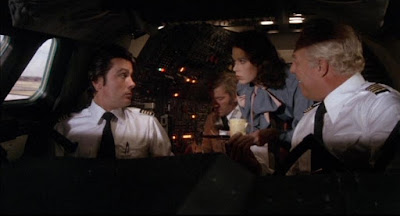
Once
again, George Kennedy appears as the series’ common thread, Joe Patroni. I may
have lamented the fact that Kennedy was under-utilized in the previous film,
but I was wrong – oh, so wrong. The filmmakers somehow forgot (or hoped that
audiences forgot) Petroni was a flight mechanic by trade (the first film made a
point of stating that he only had clearance to taxi aircraft), but we’re suddenly
expected to believe he’s a seasoned pilot, qualified to fly one of the most
advanced airliners ever built. Throw in a steamy love scene no one asked for, add
enough toxic masculinity for ten movies, and watch any good will he fostered in
the first and subsequent films fly out the window. Patroni’s French co-pilot,
played by Alain Delon (probably wishing he was still doing films for Jean-Pierre
Melville), mainly reacts to his brash American counterpart, while cavorting
with comely flight attendant Isabelle (Sylvia Kristel). Sadly, flight engineer Peter
O'Neill (David Warner) isn’t given much to do.

The
passengers are played by the usual odd assortment of has-beens and marginal
celebrities, reduced to lame comic moments. Eddie Albert plays Eli Sands, the
wealthy owner of the airline that operates the sole American Concorde. Jimmie
Walker spends some quality time with his saxophone, Martha Raye contends with
her irritable bowels, and Margarita (played by Charo, the “Cuchi Cuchi girl and
frequent Love Boat guest star), attempts to smuggle her chihuahua
onboard.

(There
are a few spoilers ahead, but I suspect most folks won’t care). What follows
are a series of mind-numbing plot holes big enough to fly a fleet of Concordes
through. Harrison attempts to shoot down the supersonic airliner with an
experimental surface-to-air missile, but Petroni’s flying skills save the day.
With his plans thwarted, Harrison deploys a hired gun in a fighter jet,
equipped with heat-seeking missiles. Before the French military can intercept
the rogue plane, Petroni puts the Concorde through some acrobatic evasive
maneuvers, while shooting flares out of an open cockpit window, all presumably
at supersonic speed (at this point, the filmmakers must have decided to eschew
anything remotely plausible). Petroni’s damaged craft is forced to make an
emergency landing in Paris, but it doesn’t stop there, dear reader. After the
big kerfuffle in the sky, which in the real world would have certainly spurred
a massive international investigation, and likely grounded the aircraft for an
unspecified time, the Concorde is tidied up and departs for the final leg of
the journey to Moscow. In a last-ditch attempt to down the airliner, Harrison
arranges a phony maintenance man to sabotage a cargo door so it will open
mid-flight, resulting in rapid decompression. Said maintenance man is caught by
authorities after giving chase on the runway, with cash spilling out of his
suit. Pop quiz – If you were in a position of authority would you A),
Immediately order the Concorde back to the airport, or B) Allow it go on its
merry way? If you chose “B,” congratulations! You unnecessarily endangered the
lives of everyone aboard, leaving the crew to attempt a crash landing in the
Swiss Alps.

Produced
for a middling $13 million, this was the most expensive of the Airport films,
but you’d be hard-pressed to see any evidence on screen, with some truly awful
special effects on display (considering this was the same year as Alien,
Star Trek: The Motion Picture, and Moonraker, it’s inexcusable). Airport
’79 turned out to be a disaster in more ways than one, with poor reviews
and tepid box office performance. It’s hard to say much in the defense of this
albatross, which brought the decade-long series to such an inauspicious end,
but hey, we had a few laughs along the way, right?






